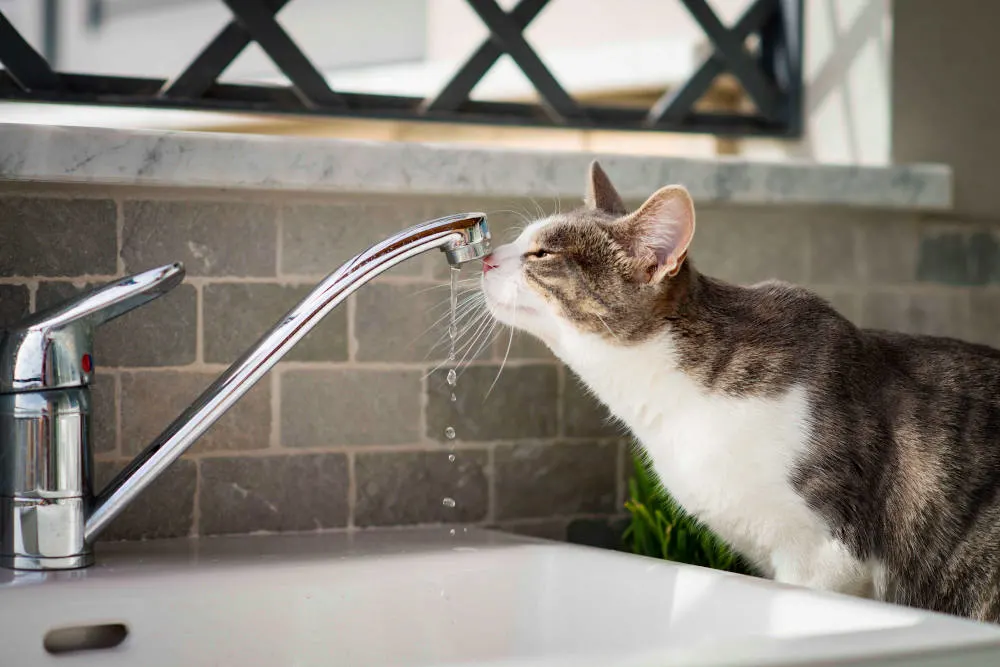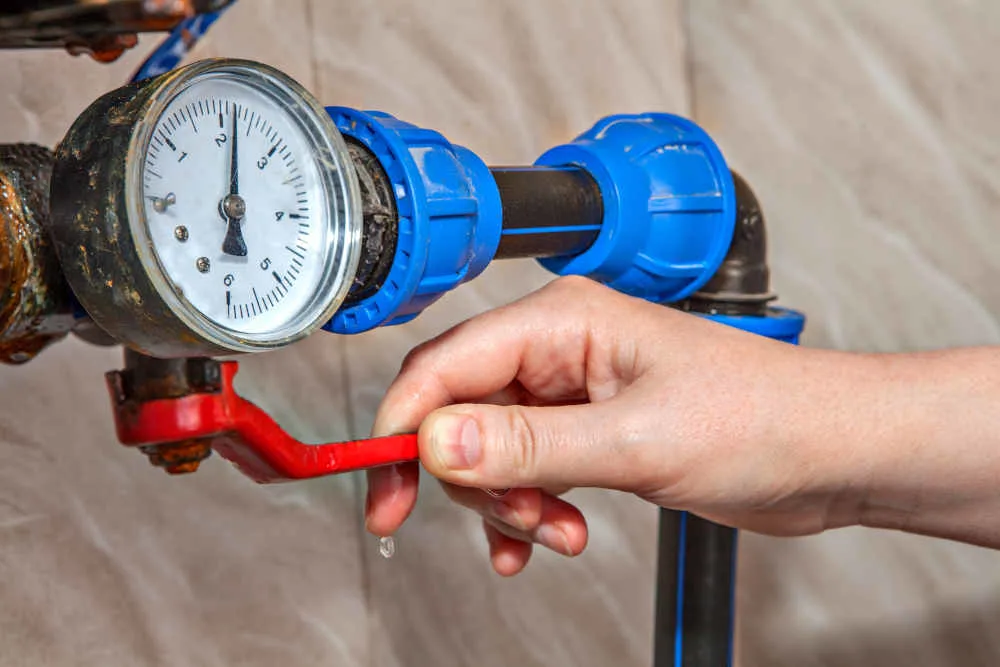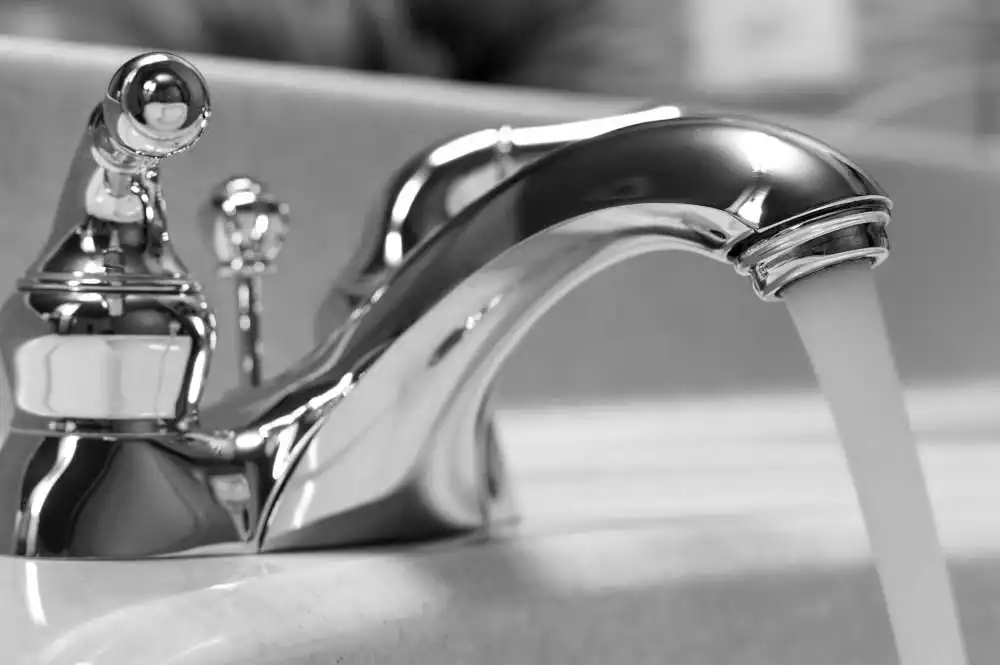To consume the daily recommended amount of water, I find myself venturing downstairs into the kitchen to refill my glass of water rather than across my room for the bathroom water. Lately, I have wanted to figure out whether drinking water from the bathroom is bad for me compared to drinking water from the kitchen.
Technically all the water in the house comes from the same source, i.e., the water mains. But there are some cases where the plumbing stages between mains and faucet can cause a difference in taste and quality. Let’s look at the potential causes of these differences as well as methods of testing the source and quality of your bathroom water.

As a general rule, bathroom and kitchen water are not different. In third world countries, or remote locations bathrooms are fed from storage tanks instead of the mains, which can lead to a different taste and even make it potentially harmful.
The Same Water Runs Throughout the House

Chemically, water is composed of two hydrogen atoms and one oxygen atom. No matter where water comes from (kitchen or bathroom), the chemical composition of water is the same. However, contaminants in the groundwater, such as lead from old piping, coliform bacteria, and pesticides, can also affect the overall quality of water.
These contaminants add other molecules to water, such as lead, proteins, and organic (carbon-filled) compounds, which lower the overall quality of water.
In general, modern homes have groundwater sourced from the main water supply of the town or city in which they are located. The water is provided from pipelines laid throughout the house and which are the same in the kitchen and the bathroom. The result is that the quality of the water is the same.
This means that the kitchen sink water, the dishwasher water, the toilet water, the shower/bathwater, and the bathroom sink water all are the same chemically—H2O with few minor pollutants from the city groundwater.
While there are debates about whether some pipelines are different in the kitchen and bathroom, the homeowner’s plumber is the best person to ask about the home’s plumbing system.
Exception: Older Homes
Older homes may have different types of plumbing, which are outdated, with various types of piping in different rooms. For example, while lead pipes were restricted in the 1920s and nationally banned in 1986 after Congress passed the Safe Drinking Water Act, older homes may still have complete lead pipes with water running through them.
With these older homes, plumbing systems are often replaced piecemeal, with intact pipes left in partial places. This is because it is difficult, not to mention costly, to replace an entire plumbing system.
As the kitchen is the place people will most likely go for drinking water, it is very likely that the bathroom may have older pipes with more lead, while the kitchen is equipped with an upgraded piping system.
It is important to remember that lead was popular due to its durability and multi-use as piping and solder for copper fittings.
However, lead is incredibly toxic to the human body and has resulted in multiple health issues such as neurological damage (memory loss) and chronic fatigue. So, if your bathroom pipes are old enough to contain lead, it is imperative that you do not drink water from the bathroom faucet.
Bathroom Fed From Tank or Mains
A water tank is a storage container that collects water and keeps it for later access, such as running water. Water storage tanks come in all configurations. In the United States, they are most commonly found as cylinders ranging from small 5-gallon containers to large 100-gallon containers.
A main is a water source from the municipal district that delivers fresh groundwater into a building. A water mains source is identified by locating a building’s water meter, which measures the inflow of water.
Kitchens are usually fed from mains as the water is sourced from the municipality, but bathrooms may be fed from storage tanks if the plumbing is not consistent.
To determine if the water from storage tanks is still potable (suitable for drinking), the conditions of the storage tanks must be investigated.
This is important because water technically can be stored indefinitely as a result of the addition of chemicals, such as household grade bleach, which can be used yearly to maintain water quality. However, it is best to cycle through the water storage before this point so that water tanks can be cleaned and refilled with new water.
To check if the water that has been kept in a storage tank is potable, observe the following:
- Does the water appear clear? If murky, do not drink.
- Does the water smell bad? If there is an odor, do not drink.
- Are there any particles in the water? If so, do not drink.
- Are there any green algae growing on the surface of the water? If so, do not drink.
Whether your water comes from a tank or the mains, you need to watch out for discolorations in both the hot and cold water, which could indicate an issue with the water quality. Sometimes, this discoloration is more apparent in bathrooms as kitchen faucets often have a more advanced filter.
How to Tell if the Bathroom Water Is the Same as Kitchen Water
Shut off the Mains
Locate the main water tap by following the water meter’s connection. Turn off the main water tap and attempt to turn on the kitchen faucet and bathroom faucet. If both faucets do not produce water, then they are supplied from the same water source.

If one faucet turns on, then it is not from the water main but rather a storage tank.
Additionally, there are other methods by which you can test whether or not the bathroom water is the same as the kitchen water.
Home Water Testing Kits
There are water testing kits easily purchased at your local hardware store ranging from inexpensive $5.00 pH strips (amazon link) (check that the colors match after dipping into both water sources) to mid-price $25 contaminant strips (amazon link) to high-end $175 water testing portable packages.
Professional Service Providers
Lastly, there are some companies such as Tap Score and Prima Coffee Equipment, which can take samples of water and analyze any potential pollutants.
While this option is the most accurate determinant of similar water quality, it is also the most expensive ranging from $200 and up.
Can Faucets Affect the Quality or Taste of Water?
There is a United States national standard called NSF 61 that dictates what criteria faucets must meet in delivering water.
Even though the different size requirements for bathroom and kitchen faucets mean that they are not easily interchangeable, this national standard is applied to both bathroom and kitchen faucets.
However, additional filters can be built into the faucet, and these are most commonly found in kitchen faucets. The filters are able to remove lead, iron, and fluoride found in the water, which improves the water and may subsequently affect the taste of the water as well.
More complicated and expensive built-in filtration systems are designed to influence the water system of the entire household and can change the water quality of both the bathroom and kitchen sink.
Is It Safe to Drink Water From the Bathroom Tap?

It is safe in the USA to drink water from the bathroom tap. While most people would prefer to drink water from the kitchen tap due to a built-in filter, the water source is nonetheless the same.
Similarly, in the UK, it is also safe to drink tap water from the bathroom as long as it is from the mainline and it is not an old house. If the bathroom faucet is connected to an internal tank, further inspection is required, as the water may not be potable.
In Canada, it is generally safe to drink water from the bathroom faucet. It is common for most Canadians to install carbon filters in order to screen for microplastics in the water.
Finally, in Australia, the water from the bathroom faucet is safe to drink due to the Australian Drinking Water Guidelines (ADWG). However, recent scandals such as the 1998 largest water treatment plant containing parasites are important to remember.
Sources
https://www.health.harvard.edu/staying-healthy/how-much-water-should-you-drink
https://www.greatlakesnow.org/2020/09/drinking-unsafe-water-contaminants-solutions/
https://www.amazon.com/dp/B00028PDO8?tag=hvacbuzz-20
https://www.nhmrc.gov.au/sites/default/files/documents/reports/aust-drinking-water-guidelines.pdf

